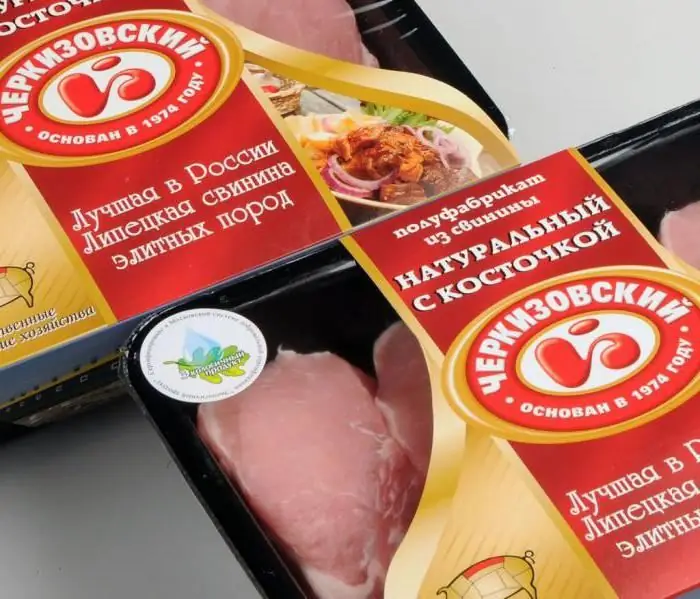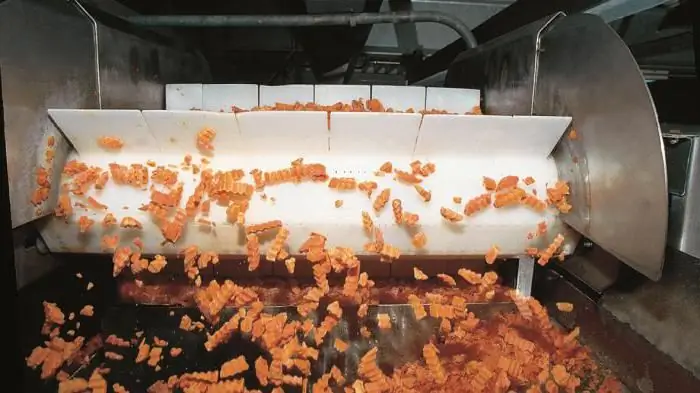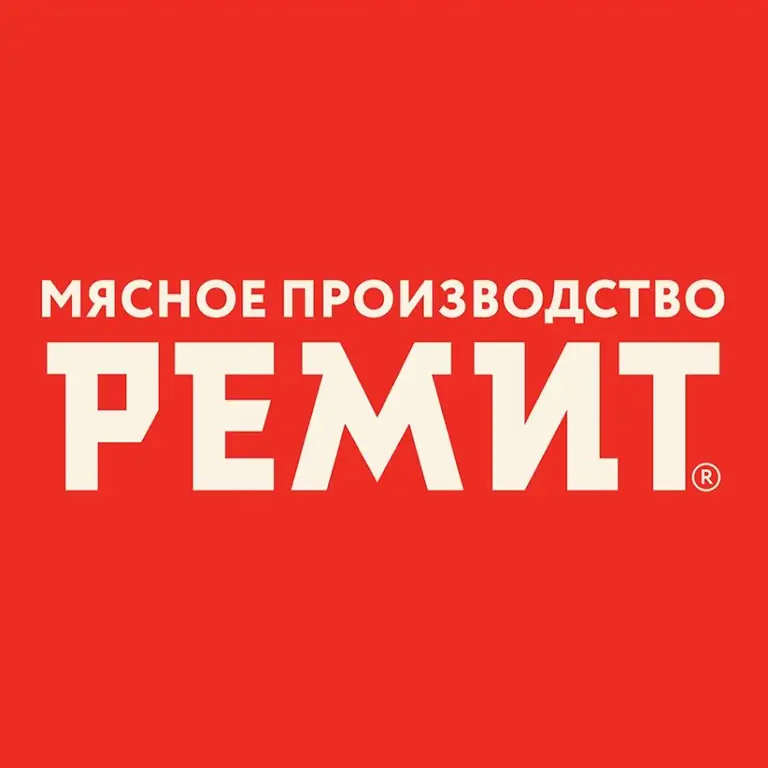2026 Author: Howard Calhoun | [email protected]. Last modified: 2025-01-24 13:10:35
Canned meat and fish have a long shelf life. Their nutritional value is quite high. These products are easy to transport. There are special factories in the country that produce them for a wide range of consumers. However, many people prefer to make homemade canned meats. Depending on the contents, factory-made products can be stored for up to 3-5 years without significant changes.

Production of canned meat
Different products are used for making. In particular, production is carried out from all types of meat, fat, offal, finished products, various raw materials of plant origin. In the manufacture of spices, animal blood are also used. Canned meats are placed in different containers. These can be containers made of tin or glass, aluminum or polymers. In industry, a special unit of measurement is used. It is necessary to calculate the volume in which canned meat (stew) is produced. GOST sets parameters for this unit. As it is accepted conditional bank. It is a cylindrical tin container. Its volume is 353 cm3,diameter - 102.3 mm, height - 52.8 mm. When converting physical cans to conditional, coefficients are used.
Assortment
Canned meat is on the market in a wide variety. Products are classified primarily by the raw materials used in the manufacture. So, there are canned meat products, poultry meat and cattle, lard-bean, meat and vegetable and others. Depending on the purpose, products are distinguished:
- Diet.
- Used after processing.
- Dining.
- Snack bars.
The industry also produces canned meat for children. These products have special requirements.

Characteristic
Canned meat is made from raw, fried or boiled raw materials. In the manufacture are used: fat, s alt, pepper, bay leaf. The most common canned meat products are stewed beef, pork, and lamb. The s alt content in such products is 1.5%. The share of fat and meat is about 55%. These products are usually used in the preparation of second and first courses. Canned offal is various kinds of pastes ("Liver", "Special", "Nevsky"), fried kidneys, liver, brain, tongue in jelly, heart, and so on. They are consumed mainly for breakfast or in the form of cold snacks. Products from meat products are made from minced meat ("Separate", "Amateur", "Pork", "Sausage", etc.).
These include products from smokedbacon and bacon. They are cut into small slices and pasteurized at a temperature of 75 degrees. They also produce canned poultry meat in its own juice, sausages in tomato, fat and broth, creams from chopped ham. Additionally, a side dish may be present in the jars. Canned meat and vegetables differ in the type of raw materials: meat legumes, meat and vegetables, meat pasta and others. They are used in the preparation of second and first courses. These products are ready to eat after being cooked.
Dietary and children's canned food is presented in a wide range. So, for six-month-old babies, homogenized products are produced. For children 7-9 months old, puree-like canned food is made, 9-12 months. - coarsely ground. The main raw materials for the production of products are: poultry, tongue, liver, veal. Beef is also used. Among the most popular products are such as "Fairy Tale", "Baby", "He alth".

Quality
Canned meat must comply with established standards and sanitary standards. The quality of products is determined in the course of organoleptic examination, physical and chemical, and in some cases (if necessary) - bacteriological analysis. In addition, checking structures pay special attention to the state of the container. When examining canned meat, they check the condition of the paste, the content of the label, the presence / absence of defects, rust spots on the container, marking, the amount of solder influx. On the inner surface of the containers duringsterilization, areas of blue color may appear. On glass containers, a dark coating from iron sulfide may be detected. It is harmless to humans, but significantly spoils the appearance of products.
Organoleptically, canned meat is checked when heated or cold. Experts evaluate the taste, appearance, smell, consistency of the contents. If there is broth in the container, check its transparency and color. Assessing the appearance, attention is paid to the number and size of the pieces, the features of their installation. Physical and chemical analysis of products involves the determination of the content of fat and muscle tissue, s alt and nitrite, broth, copper, tin and lead. The maximum allowable concentrations are set by the standards for each type of canned food. Depending on the quality and type of raw materials, as well as organoleptic indicators, products of one or two varieties are produced. The first, for example, include canned food from fried meat, boiled beef. One grade is produced and spicy pork. Stewed lamb and beef are made of the highest or first grade. For them, raw materials are used, respectively, of the 1st or 2nd category of fatness.

How canned meat is labelled?
GOST establishes a strict procedure in accordance with which mandatory information is applied to banks. The marking is present on the lids of the containers. Application of information is carried out in relief or using indelible paint. On the lids of unlithographed cans, information is indicated in the following order:
- Day and month of production - 2 digits each.
- Year of issue - last 2 digits.
- Shift number.
- Assortment number (1-3 digits). If canned meat of the highest grade is marked, the letter "B" is added here.
One or two letters also indicate the index of the system to which the manufacturer belongs. It could be:
- A - meat industry.
- K - fruit and vegetable farm.
- KP - food industry.
- CA - consumer cooperation.
- Forestry - forestry.
- MS - agricultural production.
The plant number is indicated by 1-3 digits. The marking is arranged in two or three rows, depending on the diameter of the cap. Information can be indicated only on the cover or on it and on the bottom (from the outside). "Approved by the Ministry of He alth of the Russian Federation" should be written on children's cans.

Storage
Canned meat should be kept in a ventilated area with minimal temperature fluctuations. Relative humidity should be maintained at 75%. At the same time, the air temperature should be within 0-5 degrees. Reduced t (below zero) negatively affects the safety of products. At temperatures above 5 degrees, tin begins to pass into the contents of the container. This may shorten the shelf life of products.
Sterilization
It has a significant impact on the state of the contents of the cans. Sterilization causes the formation of stable protein bonds. This, in itsturn, reduces the digestibility of canned food by about 20%. In addition, some amino acids and vitamins (threonine, methionine, isoleucine, phenylalanine, valine) are lost during sterilization. An amino acid such as lysine will be less absorbed after pasteurization at a temperature of 70 degrees. Extractive substances, especially nitrogen-containing substances, partially decompose.
When sterilized, creatine, which is involved in the formation of taste, is destroyed by 30%. When it breaks down, uric acid and sarcosine are formed. Some vitamins lose their activity, and ascorbic acid is completely destroyed. Partially decomposed vitamins of the B-group. So, B is destroyed by 80%, and B2 - by 75%. Vitamins D and A break down by 40%, gzitamine H - by 60%. The released sulfhydryl groups form hydrogen sulfide in the presence of oxygen. This causes sulfitation of the vessel walls. In addition, iron ions present in the product form black iron sulfite.

Content Features
Canned stews are considered the most shelf-stable. Products from ham, sausages contain at a temperature of not more than 5 degrees. The shelf life of canned food containing vegetable oils is shorter. Over time, corrosion begins on the inside of the tin. In them, a significant increase in the content of tin is observed already after 3-4 months. When canned food is frozen during storage, the tightness of the containers may be broken, the varnish on the tin surface may be destroyed. ExceptIn addition, low temperatures adversely affect the appearance and consistency of the contents.
Preparing for implementation
After the production and release of canned food from the refrigerator in the summer season, they must be placed in chambers with a temperature of 10 to 12 degrees. Ventilation should be increased to prevent moisture and subsequent rust on the cans. After making canned food, it should be kept for 3 months. During this period, the alignment of organoleptic indicators occurs. This process consists in the uniform distribution of spices, s alt, fat and other components, as well as in the exchange of compounds between the dense and liquid mass.

Conclusion
During storage, cans may bulge - bombage. It can be microbiological, physical or chemical. At the same time, damage to canned food can occur without any external signs. The reasons in such cases may be: acidification of the contents, accumulation of s alts of heavy metals. In store warehouses, canned food is stored until the expiration date. It is indicated in the technical/normative documentation or in the supply contract.
Recommended:
Meat processing enterprises, meat processing plants in Russia: rating, products

Today, a huge number of enterprises are engaged in meat processing. Moreover, some are known throughout the country, and some - only on the territory of their region. We offer to evaluate the most powerful meat processing enterprises in Russia in terms of productivity, which have the largest revenues and high turnover. Below is a list of such companies. It is based on consumer feedback
Bolt strength class: marking, GOST and tightening torque

The article describes the main types of threaded connections. Particular attention is paid to the concept of bolt strength class
Meat: processing. Equipment for meat and poultry processing. Production, storage and processing of meat

Information of state statistics show that the volume of meat, milk and poultry consumed by the population has significantly decreased in recent years. This is caused not only by the pricing policy of manufacturers, but also by the banal shortage of these products, the required volumes of which simply do not have time to produce. But meat, the processing of which is an extremely profitable business, is very important for human he alth
Meat fermentation: process, structure and properties of raw meat

Gourmets know that a good steak is not easy to cook. And in this matter, everything is important - the choice of meat, its preparation (autolysis or fermentation of meat), the degree of roasting. Despite the great popularity of home grills, the secret to cooking a good steak remains a mystery to many. In the article we will talk about the difference between a beef steak from fermented meat and a steak from a steam room. And also about how to ensure the fermentation of raw materials at home
REMIT Meat Processing Plant LLC: feedback from customers and employees, manufactured products and quality of meat products

REMIT reviews are of interest to customers who are considering options for cooperation with this company, and employees who expect to get a well-paid and stable job. In this article, we will talk about this meat processing plant, what products it produces, whether its quality corresponds to the declared one, what its employees and partners say about the enterprise

